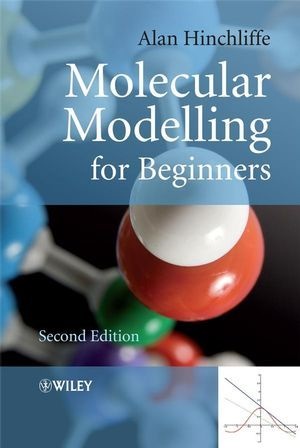Read more
Informationen zum Autor Alan Hinchliffe, Department of Chemistry, UMIST, Manchester, UK. Klappentext Molecular Modelling for beginners, Second Edition is a concise, basic introduction to modelling and computational chemistry including relevant introductory material to ensure greater accessibility to the subject.* Partially updated from the first edition, chapter dealing with Monte Carlo and molecular dynamics, the Gn models, transition states and solvent models have been completely rewritten. A new chapter entitled 'Sharing out the energy' has been added to give a deeper understanding of the many statistical concepts discussed. All the illustrative examples contained in the text have been reworked using state of the art software. The associated 3website contains a number of relevant problem sets, together with suggested solutions.* The Appendix ('A Mathematical aide-memoire') gives relevant mathematical detail and can be used stand-alone.Carefully structured and including many real chemical examples:* The text begins by introducing the relevant fundamental theories of classical mechanics and classical electrostatics.* These basic theories are then applied to modelling, concentrating on developing models from classical mechanics an focusing in particular on molecular mechanics.* Attention then turns to statistical concepts, with a discussion of the basic methods of statistical thermodynamics.* Monte Carlo and molecular dynamics are then treated in some depth.* We then turn to quantum models, from simple quantum gases through fashionable density functional theory.* With an entire chapter devoted to QSAR and discovery chemistry, the text successfully combines the essential theory with relevant applications and examples designed to encourage student understanding.* The text ends with a discussion of transition states and hybrid models.This text will appeal to student taking undergraduate courses in chemistry, pharmacy, biochemistry, chemical engineering and materials science. It may also prove useful to students and researcher sin departments of biology, physics and maths who are required to study molecular modelling as part of their course and professionals who need a basic introduction to this increasingly important subject. Zusammenfassung Updated to appeal to today's student, Molecular Modeling for Beginners, Second Edition provides a concise, basic introduction to this evolving and developing field. This carefully structured textbook includes many real chemical applications combined with worked problems and solutions in each chapter. Inhaltsverzeichnis Preface to the Second Edition. Preface to the First Edition. Chapter 1: Electric Charges and their Properties. 1.1 Point Charges. 1.2 Coulomb's Law. 1.3 Pair Wise Additivity. 1.4 Electric Field. 1.5 Work. 1.6 Charge Distributions. 1.7 The Mutual Potential Energy U. 1.8 Relationship between Force and Mutual Potential Energy. 1.9 Electric Multipoles. 1.10 Electrostatic Potential. 1.11 Polarization and Polarizability. 1.12 Dipole Polarizability. 1.13 Many-body forces. 1.14 Problem Set. Chapter 2: The Forces between Molecules. 2.1 Pair Potential. 2.2 Multipole Expansion. 2.3 Charge-Dipole interaction. 2.4 Dipole-Dipole Interaction. 2.5 Taking Account of the Temperature. 2.6 Induction Energy. 2.7 Dispersion Energy. 2.8 Repulsive Contributions. 2.9 Combination Rules. 2.10 Comparison with Experiment. 2.11 Improved Pair Potentials. 2.12 A Numerical Potential. 2.13 Site-Site Potentials. 2.14 Problem Set. Chapter 3: Balls on Springs. 3.1 Vibrational Motion. 3.2 The Force Law. 3.3 A Simple Diatomic. 3.4 Three Problems. 3.5 The Morse Potential.

